Y después de un merecido descanso, al menos en el plano digital, ya estamos devuelta para seguir compartiendo más y más contenido con todos ustedes.
Y es que los días pasados han sido bastante pesados en el trabajo. Por fín, después de casi cuatro años, la semana pasada nos entregaron el Módulo 1 y la nueva Ósmosis Inversa. Pero de eso hablaremos en otra ocasión.
El día de hoy me gustaría platicarles un poco sobre uno de los nuevos hobbies que he empezado durante la cuarentena.
Plantas Carnivoras
Así es amigos, durante estos días de cuarentena (que ya son casi cuatro meses en México) me he enamorado de este tipo de plantas. Simplemente las encuentro super interesantes.
Actualmente tengo seis ejemplares, dos venus atrapamoscas (Dionaea muscipula), una nephentes, una sarracenia y dos droseras.
La verdad es que hay bastantes cosas que me gustaría contarles sobre estas plantas, pero ya será en un futuro. El día de hoy se trata como es que tengo las plantas en casa.
Un micro pantano en casa.
Estas plantas crecen en pantanos, así que después de hacer un poco de investigación, decidí crear un mini pantano para poderlas tener dentro de casa.
Lo primero es que hay que conseguir los materiales:
And after a well deserved rest, at least on the digital world, we are already back to continue sharing more and more content with all of you.
And it is that the past days have been quite heavy at work. Finally, after almost four years, last week we received Module 1 and the new Reverse Osmosis plant. But we will talk about that another time.
Today I would like to tell you a bit about one of the new hobbies that I started during the quarantine.
Carnivorous Plants
That's right friends, during these days of quarantine (almost four months here on Mexico) I have fallen in love with this type of plants. I just find them super interesting.
I currently have six specimens, two venus flytraps (Dionaea muscipula) , one nephentes , one pitcher plant and two sundews.
The truth is that there are quite a lot things I would like to tell you about these plants, but it will be in the future. Today is about how I have the plants at home.
A micro swamp at home.
These plants grow in swamps, so after doing a little research, I decided to create a mini swamp so I could keep them indoors.
The first thing is that you have to get the materials:
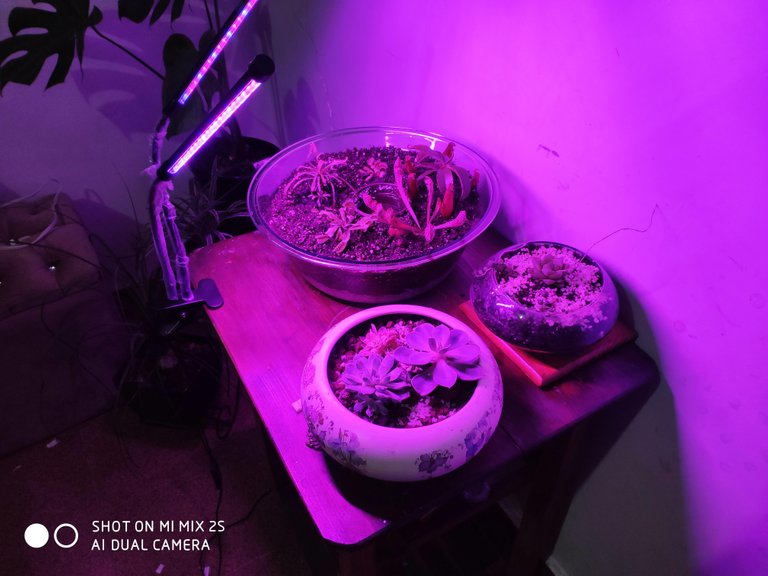
| A bowl to hold the plants and to keep the water in the system. | These types of plants need a large amount of water to survive, so with a glass bowl the water can be kept stagnant and moistening the substrate for plants for days without having to constantly add water. | Un tazón para tener las plantas y que mantenga el agua del sistema. | Este tipo de plantas necesitan una gran cantidad de agua para poder sobrevivir, así que con un tazón de cristal el agua se puede mantener estancada y humedeciendo el sustrato para las plantas durante días sin tener que estar añadiendo agua constantemente. |
| A small pot | This pot will help us to replace the water without compressing the substrate and as a water reserve for our swamp. | Una maceta pequeña | Esta maceta nos ayudará a reponer el agua sin comprimir el sustrato y como reserva de agua para nuestro pantano. |
| Perlite | In addition to adding it to our main substrate, we will use the perlite as the bottom of our swamp to give space to a greater amount of water within the system. | Perlita | Además de añadirla a nuestro sustrato principal, la perlita la ocuparemos como fondo de nuestro pantano para darle espacio a una mayor cantidad de agua dentro del sistema. |
| Low Nutrient Sutrate | In my case we will use a mixture of perlite and peat moss for the substrate. This type of substrate will give plants enough oxygenation and is quite absorbent. | Sutrato bajo en nutrientes | En mi caso ocuparemos una mezcla de perlita y peat moss para el sustrato. Este tipo de sustrato les dará bastante oxigenación a las plantas y es bastante absorbente. |
| Low salt water | I will use purified water. Ideally, use water with the least amount of salts or dissolved solids, such as reverse osmosis, distilled, rainwater. At the moment I will be using purified water since I don't have anything else. This will cause the salts to accumulate in the substrate over time and you may have to change it once a year to avoid affecting the plants. Although maybe I can bring some demineralized water from work that would be much better. | Agua baja en sales | Yo usaré agua purificada. Lo ideal es usar agua con la menor cantidad de sales o sólidos disueltos, como lo es el agua de lluvia, destilada, de ósmosis inversa. De momento estaré usando agua purificada ya que no tengo nada más. Esto provocará que con el tiempo sales se empiecen a acumular en el sustrato y que quizá tenga que cambiarlo una vez al año para evitar que afecte a las plantas. Aunque quizá pueda traer un poco de agua desmineralizada del trabajo que sería mucho mejor. |
| An LED grow lamp | Plants need as much sunlight as possible, I talk about 6 to 8 hours of light, but since they will be indoors I do not have a window where enough light enters, and in the future, when everything normalizes and we all come back to our activities, we may not have the same time to move the plants to get them from the sun. So a grow lamp with programmable controls ensures that the lamps get all the light they need while indoors, without the need to constantly move them. | Una lámpara LED de crecimiento | Las plantas necesitan de la mayor cantidad de luz solar posible, hablo de 6 a 8 horas de luz, pero como estarán dentro de casa no tengo una ventana donde entre la suficiente cantidad de luz, y en futuro, cuando todo se normalice y todos volvamos a nuestras actividades, puede que no tengamos el mismo tiempo para estar moviéndo las plantas para que les de el sol. Así que una lámpara de crecimiento con controles programables asegura que las lámparas obtengan toda la luz necesaria estando dentro de casa sin necesidad de moverlas constantemente. |
Ya con todos los materiales a la mano vamos a empezar a preparar nuestro micro pantano.
Lo primero que hay que hacer es colocar una cama de perlita de por lo menos un tercio de nuestro recipiente. Esta cama de perlita nos permitirá tener una mayor cantidad de agua que el sustrato podrá ir absorviendo constantemente.
With all the materials at hand we are going to start preparing our micro swamp.
The first thing to do is place a perlite bed of at least a third of our container. This perlite bed will allow us to have a greater amount of water that the substrate will be able to absorb constantly.
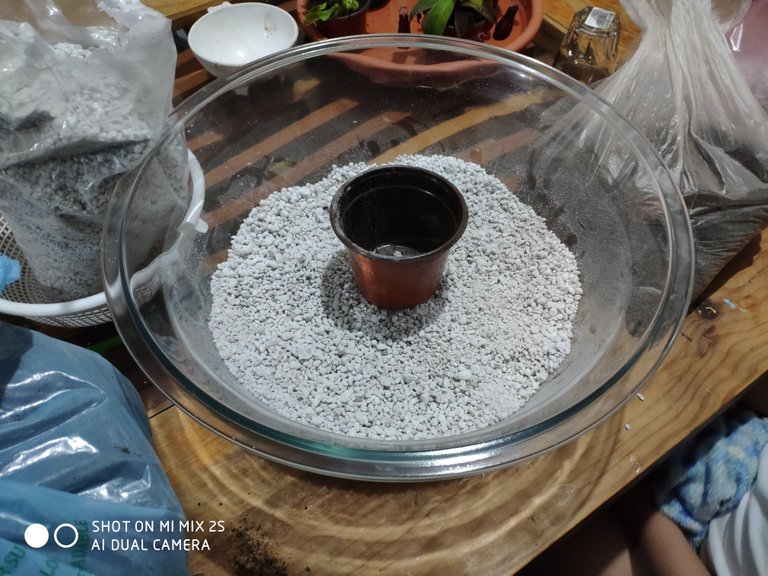
Colocamos la maceta sobre la perlita. Lo ideal es que la maceta quede sobre la cama de perlita, de esta forma el sustrato no se comprimira cada vez que agreguemos agua al tazón asfixiando nuestras plantas.
We place the pot over the perlite. Ideally, the pot is on the perlite bed, so the substrate will not compress every time we add water to the bowl, choking our plants.
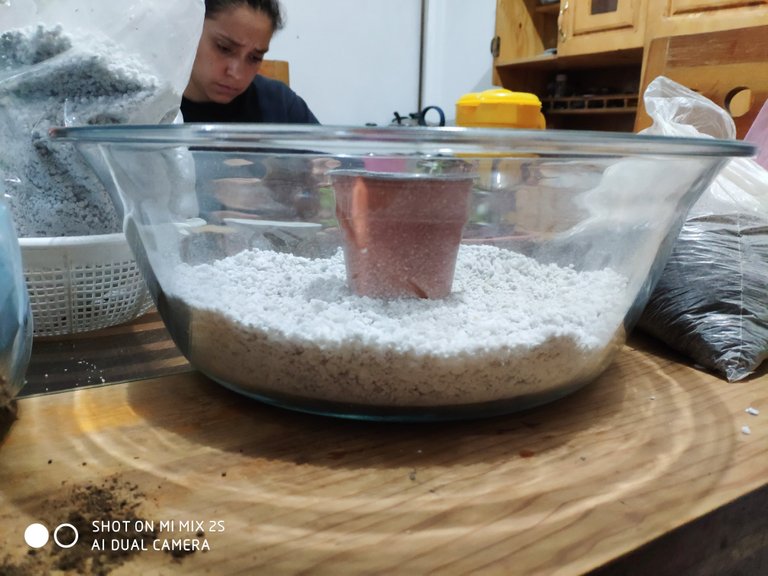
Después hay que empezar a preparar nuestro sustrato. En mi caso estoy ocupando dos terceras partes de peat moss y una tercera parte de perlita para que el sustrato sea capaz de absorber fácilmente el agua y a su vez lo suficientemente transpirable para que no se comprima el sustrato y que nuestras plantas terminen asfixiandose.
Then we have to start preparing our substrate. In my case I am using two thirds of peat moss and a third of perlite so that the substrate is capable of easily absorbing water and at the same time breathable enough so that the substrate is not compressed and that our plants end up suffocating.
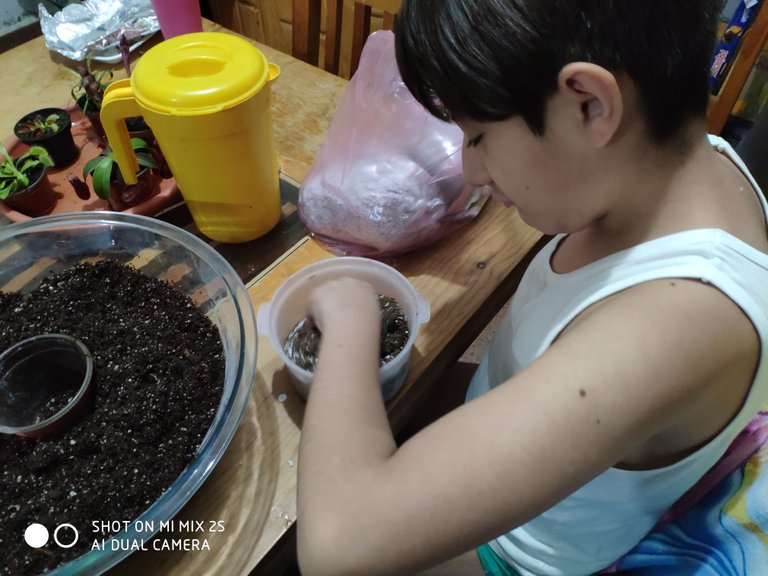
Una vez que tenemos el sustrato lo vamos acomodando al rededor de la maceta y sobre la cama de perlita hasta cubrir casi completamente la maceta.
Once we have the substrate, we will fit it around the pot and over the perlite bed until it almost completely covers the pot.

Después agregamos agua a la maceta poco a poco hasta que todo el sustrato quede perfectamente húmedo y la maceta quede casi llena. Esta primera vez puede que utilicemos varios litros de agua por que nuestro pantano estaba vacío, pero la siguiente ocasión sólo repondremos el nivel que la maceta pierda, en mi caso, unos 600 ml cada 10 días.
Then we add water to the pot little by little until the entire substrate is perfectly moist and the pot is almost full. This first time we may use several liters of water because our swamp was empty, but the next time we will only refill the level that the pot loses, in my case, about 600 ml every 10 days.
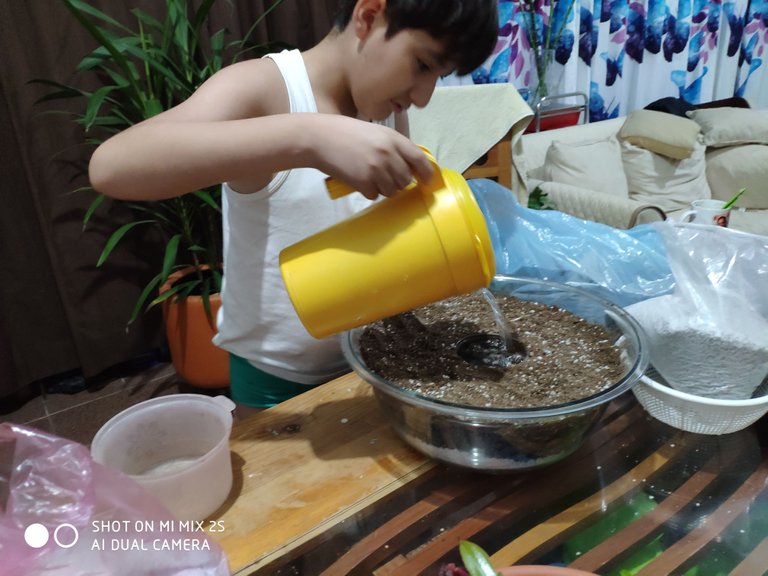
Y por último transplantamos nuestras plantas y las colocamos en su lugar con la lámpara led.
And finally we transplant our plants and put them in place with the led lamp.
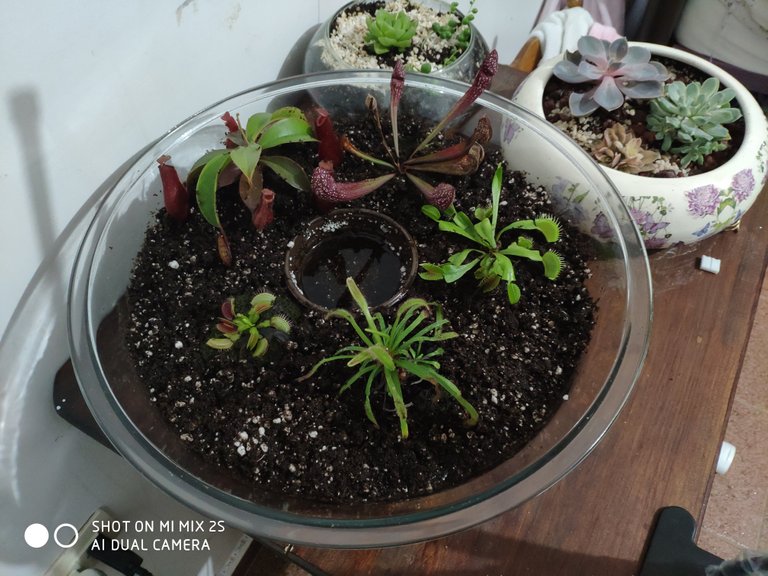
Eso es todo por el momento amigos. Ya les estaré compartiendo más sobre como van evolucionando las plantas y les iré platicando un poco más sobre ellas en futuros posts.
Un saludo y nos leemos en la próxima.
That's all for now folks. I will already be sharing more about how plants are evolving and I will be talking a little more about them in future posts.
Greetings and see you next time.
| Categoría | Post |
|---|---|
| Fotografía | |
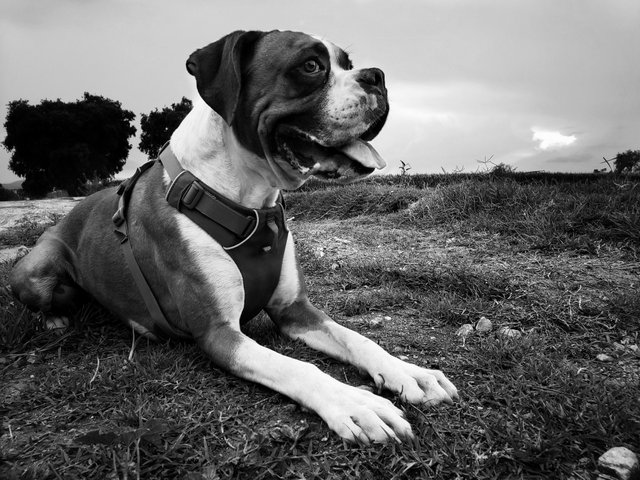 | Más Fotos De Haku |
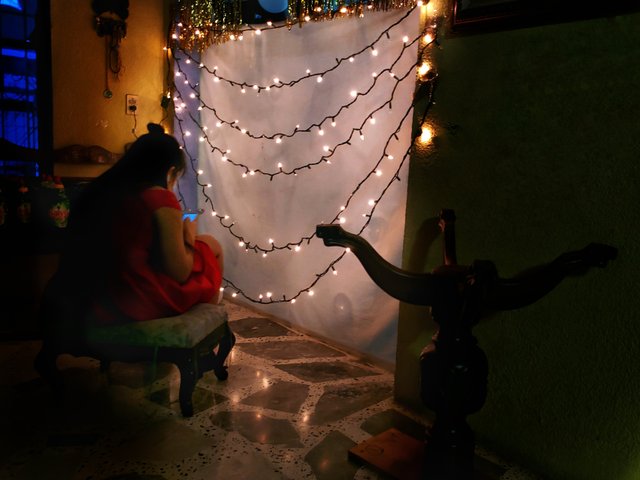 | Sola |
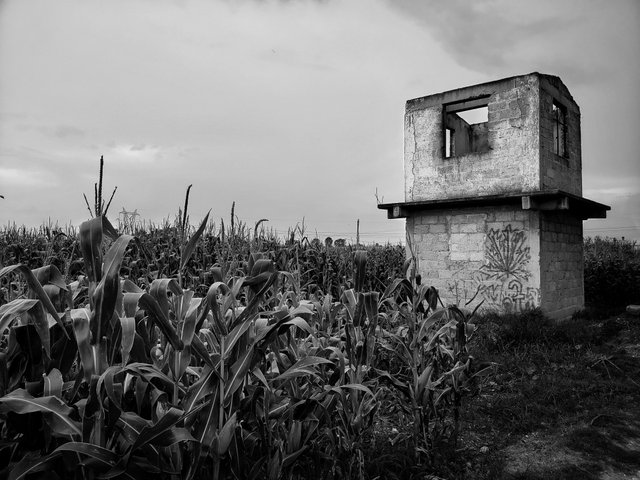 | Saliendo A Caminar |
| Gaming | |
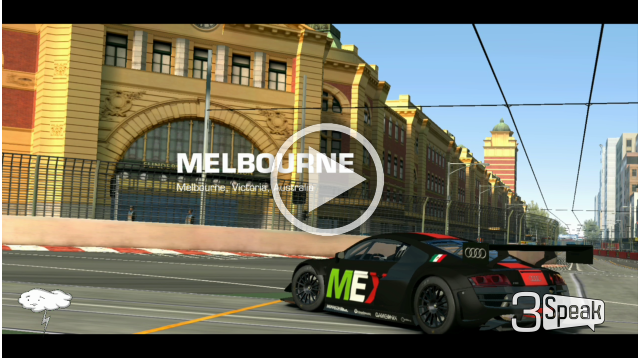 | **Real Racing 3 Ganando Créditos |
 | **#Gaming - Real Racing 3 "Muscle Vintage" Nivel 2 |
| Sports | |
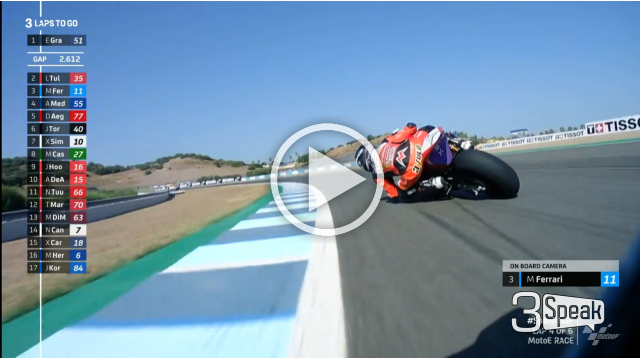 | MotoE - Gran Premio de España |
 | [MotoGP - Gran Premio de España] (https://hive.blog/hive-181335/@neuerko/pawwimep) |

Este post estuvo muy interesante, realmente no se mucho de plantitas carnívoras